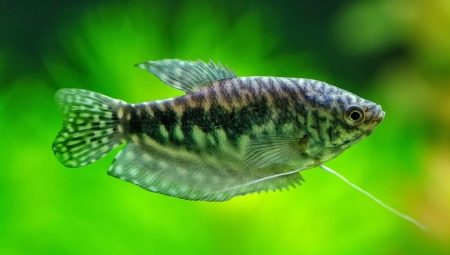Gurami - unpretentious labyrinth fish. They have a peaceful and friendly character. The aquarium with them looks unusual and bright, it can be placed in any room: in the living room, bedroom and nursery. You can watch the fish for hours; they have interesting behavior and beautiful coloring. And caring for them will not cause difficulties even for a novice aquarist.
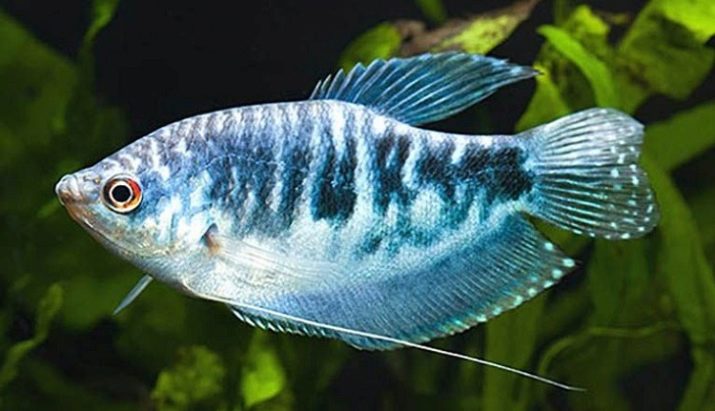
Features
Gurami are aquarium fish of the Macropod family. Their homeland is fresh water bodies of Southeast Asia. In the natural environment, they can be found both in stagnant waters and in flowing rivers, and some species can be found even in the brackish tidal zone. Unpretentious and quite tenacious, they can do without water for up to 6-8 hours.
An interesting feature of this species is the presence of a labyrinth organ. It is located in the area of the gills and is a thin plate covered with a network of vessels. Due to the maze, gourami can breathe atmospheric oxygen, they do this by swallowing air with their mouths at the surface of the water. Translated from Javanese, “gourami” means “a fish sticking its nose out of the water.” This feature must be taken into account when transporting fish. The bag or container with the gourami should not be filled with water to the very edges, it is necessary to leave a space with air.
Depending on the species, the size of gourami is usually 5 to 15 cm. But in the aquarium, most often they do not grow more than 10 cm. The body shape is elongated, flattened from the sides. The pectoral fins are elongated and resemble a mustache, while the gourami is a kind of organ of touch.With it, the fish feels unfamiliar objects in the aquarium, snails and new fish. It happens that such a mustache can break off, there is nothing to worry about, they will certainly grow back. Thanks to them, these aquarium fish are called threadbear gourami.

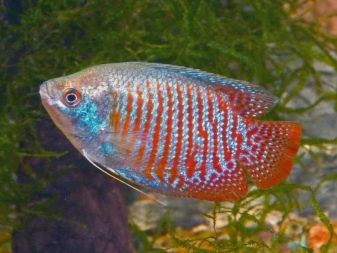
Varieties
There are many varieties of gourami, each of which has an original color and individual characteristics. Below is a description of all types.
Brown
A chain of black spots runs along the gray abdomen. Due to this color, similar to snake skin, and a more elongated body, this species is also called serpentine.
It differs in rather large sizes, in the aquarium they reach 15 cm.
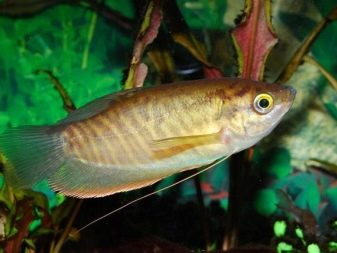
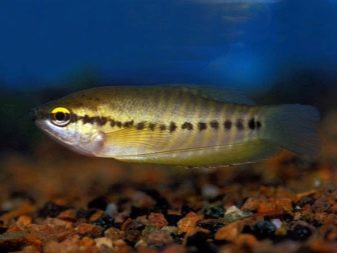
Pearl
Very beautiful view: light specks similar to pearls are scattered on a silver body. During spawning, it changes color, red and orange tints appear on the abdomen.
When kept in a spacious tank, pearl gourami can reach 13 cm in length.
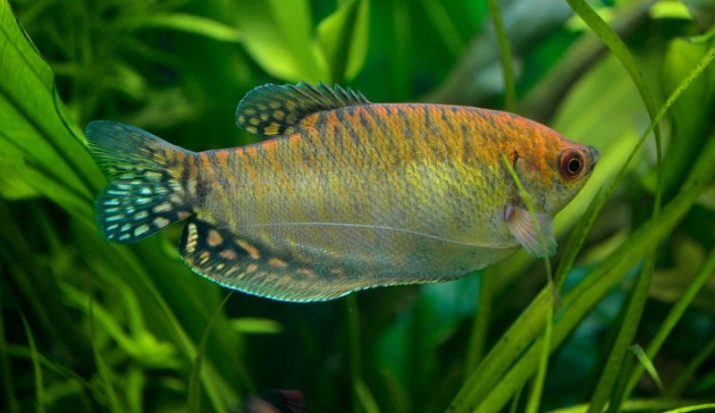
Marble
On the blue abdomen there are black spots that form a beautiful marble pattern. One of the most unpretentious species, resistant to infectious diseases. The maximum length is 14 cm.

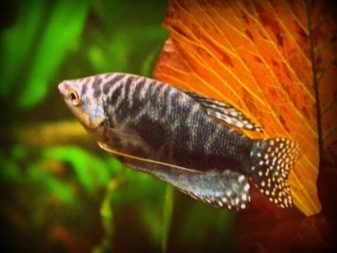
Lunar
This species got its name due to its silver color with an unusual pearl tint. It seems that soft moonlight comes from the fish. Lunar gourami will not only decorate the aquarium, but will also keep it clean.
These fish are considered good cleaners.
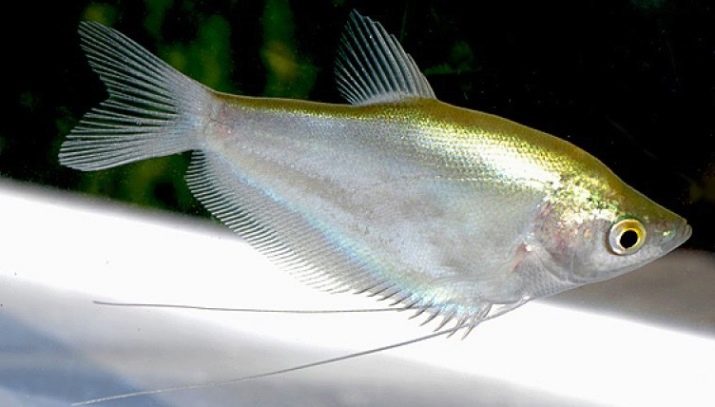
Rainbow
One of the most striking species, the abdomen is cast in blue, red and orange. Males are sometimes aggressive towards females, they can drive them around the aquarium, but usually they do not cause serious injuries. In the aquarium, rainbow gourami grow to 8 cm.
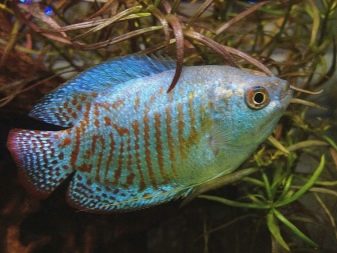
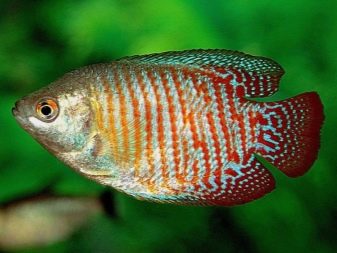
Honey
It has a rich yellow color, which changes during spawning to fiery red. Belongs to small species of gourami - grows up to 6 cm.

Spotted
This species has a silver body with light purple tints. There are two dark spots on each side. Spotted gourami is also called ordinary, it is one of the most common species. In an aquarium, it grows to 13 cm.
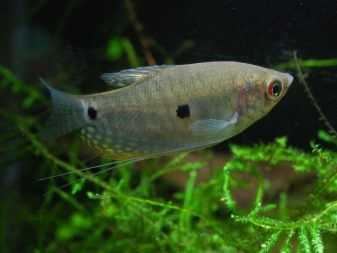

Blue
The name is derived from a beautiful blue tide. The abdomen is decorated with barely noticeable stripes and two black spots. Blue gourami has an active character, it is unpretentious and easily amenable to spawning.
It is recommended to keep it for beginner aquarists. The maximum size is 10 cm.
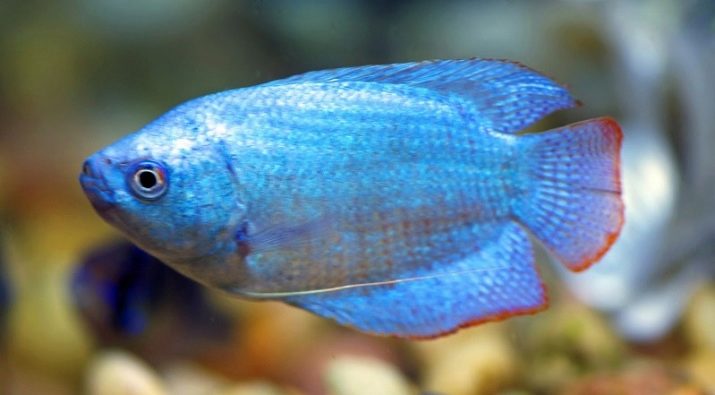
Yellow red
This species is similar in color to honey gourami, but still there is a difference between them. Yellow-red gourami are more active in nature and larger in size - they grow to 14 cm.
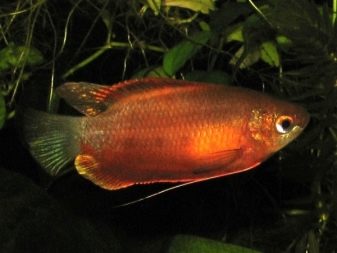
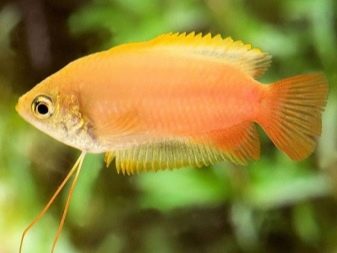
White
The gourami of this species have a uniform white-silver color. He likes to swim in the upper layer of water. In the aquarium is constantly busy with some things: builds nests, bites plants, cleans decor items. It can grow large enough - up to 17 cm.
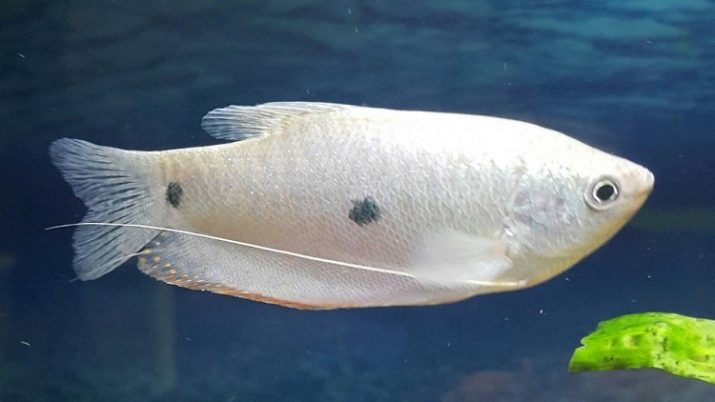
Dwarf (cumila).
In appearance they resemble males, but have shorter fins. Blue and red scales are beautifully cast on the brown abdomen. They are also called sparkling. Dwarf gourami are very tiny - they grow no more than 4 cm in length.
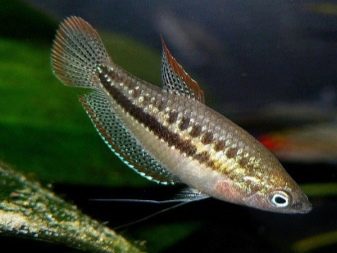
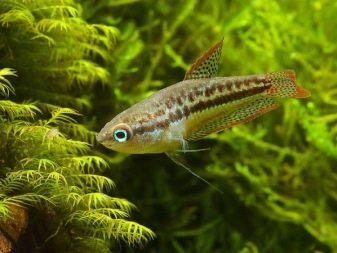
Gold
This species has a bright yellow radiant color - the fish looks like an ingot of gold. Some people like to compare it with the sun, so it has another name - solar gourami. It can be confused with yellow-red gourami, but gold has a more saturated color. The fish are shy, so they need enough shelter. The maximum size is 14 cm.
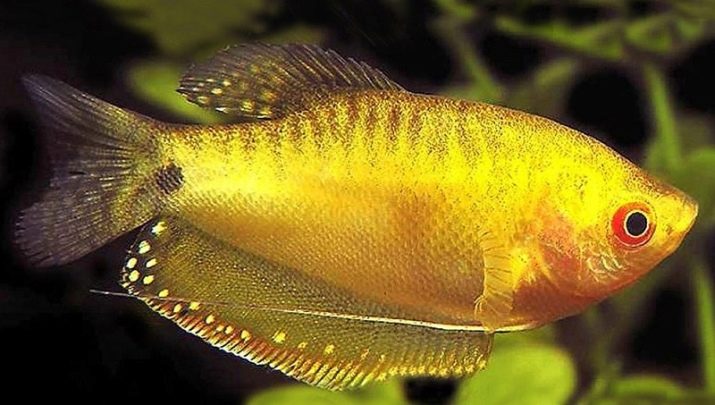
Kissing
This species got such an interesting name due to unusual behavior. Sometimes you can see two "kissing" fish, but this is not courtship, but rather a matter of hygiene. Their teeth are located close to the lips, and the fish just help each other to cleanse themselves. Kissing gourami have a pink color with a slight silver tint, and the maximum length of an individual is 16 cm.

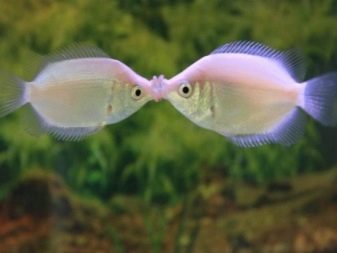
Chocolate
Gourami of dark brown color with light stripes. This species is more demanding in content. Fish prefer live food, and despite their miniature size - only 6 cm, they need a fairly spacious aquarium.
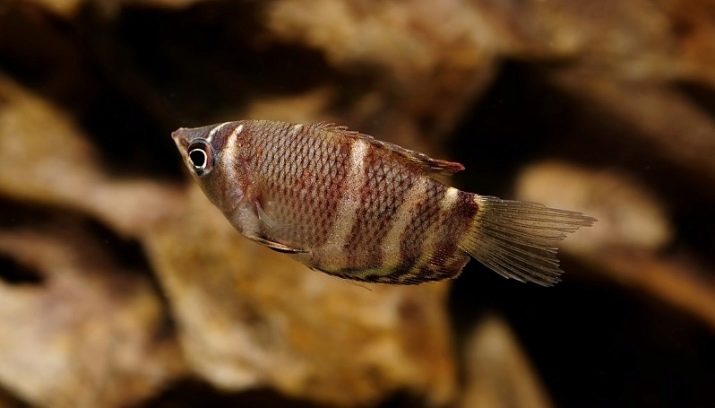
Grunting
Abdomen of bright color with a greenish tint, dark stripes pass along the body. Caring for the female, the male makes peculiar sounds similar to grunts, from which this gourami got his name. Grunting gourami grows to 8 cm.
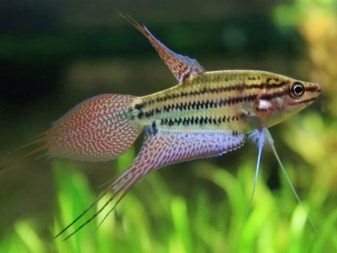

Brindle
An interesting color of the abdomen, similar to the skin of a tiger, is light brown with black stripes. This species occurred as a result of the cross between a marble and a golden gourami. The maximum length in a spacious aquarium is 10 cm.
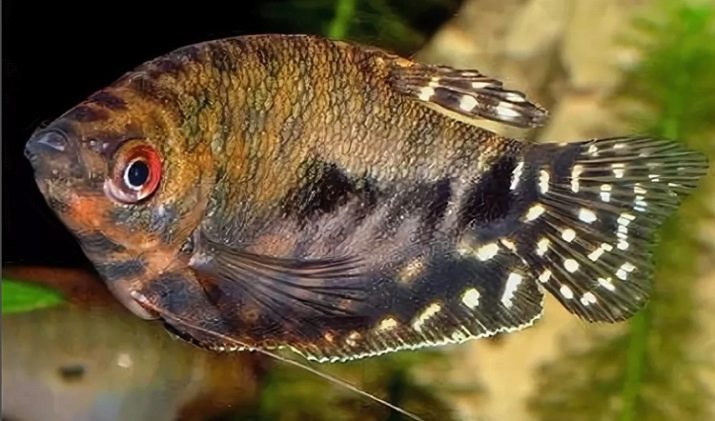
Wylanta
This is a type of chocolate gourami. Females are painted very saturated, the abdomen shimmers with red, purple and blue shades. Males are more modest, they have a gray body with white transverse stripes.
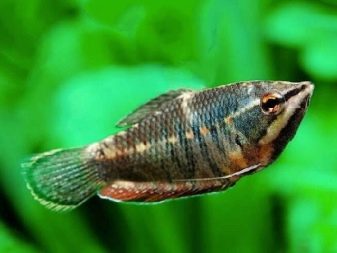
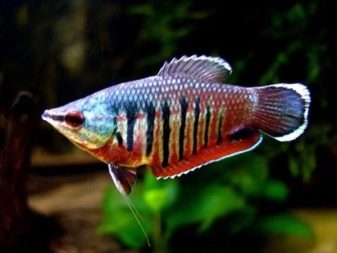
Giant (real)
These are the largest fish from the labyrinth, in aquariums grow up to 40 cm. The color of the abdomen is silver with dark stripes, which fade with age. The fish has a large forehead and powerful jaws.
Giant gourami require a large aquarium - from 500 liters.

Compatibility
Gourami are generally peaceful, do not show aggression to other fish species. But skirmishes can occur between adult males, especially in a cramped aquarium. Therefore, it is recommended to keep a flock of these fish, consisting of 1 male and 3-4 females. Several types of gourami can be settled together, for example, marble, pearl and honey.
As neighbors, they should choose the same peaceful fish, ideal:
- Minors
- zebrafish:
- tetra
- iris
- Pecilia
- neons
- swordsmen;
- laliuses;
- catfish;
- macropods;
- molliesia;
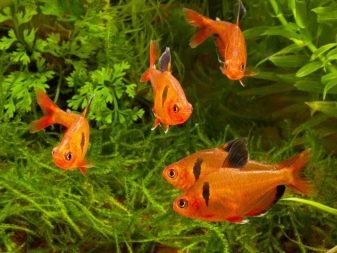
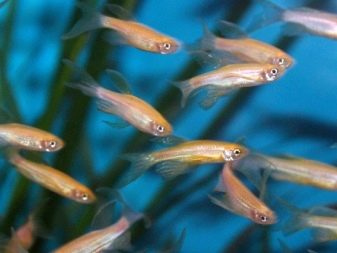
Limited gourami compatibility with the following types:
- angelfish tend to be aggressive during spawning;
- barbs can bite beautiful fins with gourami;
- Labeos love solitude and defend their territory;
- guppies can be attacked by large fish, so they can only be kept with miniature species of gouras;
- conflicts with gourami can occur, so you need to monitor the behavior of fish.
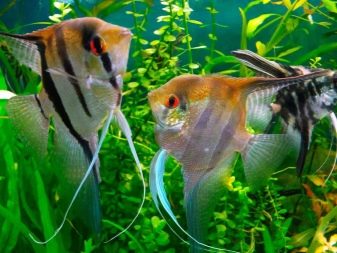
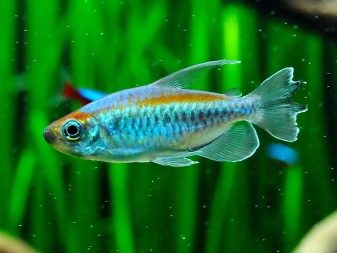
The listed species can become good neighbors for gourami, but only if the aquarium is spacious enough and has many plant shelters. If the fish are comfortable, then peaceful coexistence is possible.
There are also fish that gourami just won’t be able to make friends with:
- cockerels have a hot temper;
- cichlids - these predators, they will be driven by gourami;
- astronotuses can easily cripple weaker fish;
- discus is very conflicting, especially during spawning;
- with goldfish complete incompatibility.
Some aquarists still contain gourami with medium-sized species of cichlids.
This is acceptable if the size of the fish is approximately the same and they are kept together from an early age.
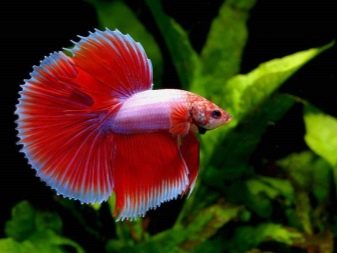

Growing conditions
Despite the fact that gourams are unpretentious, they need to create a comfortable environment. It is necessary to properly equip the aquarium, adjust the necessary water parameters and feed them well. If the fish are healthy and “satisfied” with the living conditions, their color will be bright, they look spectacular in the aquarium and attract eyes.
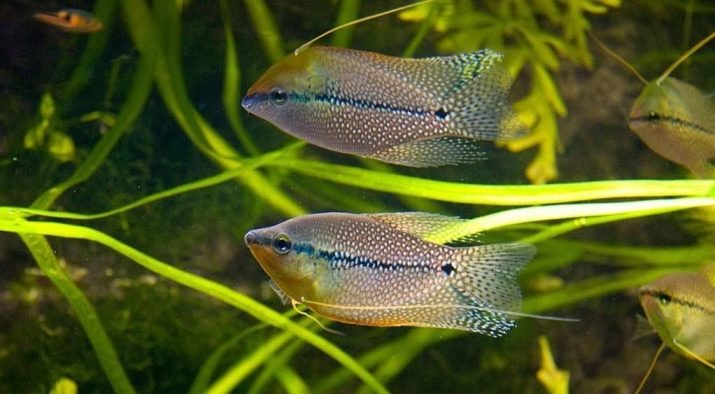
Aquarium Requirements
For the successful maintenance of fish choose an aquarium of a suitable size. For a flock of gourami of 3 individuals, a 50 liter tank is needed, but for some species there are exceptions:
- 30 liters will be enough for honey, dwarf and rainbow gourami;
- 80 liters will need spotted gourami;
- 100 liters is necessary for kissing gourams;
- 500 liters to hold a giant gourami.
The aquarium is placed away from direct sunlight, radiators and noise sources. From a loud TV, water residents can experience stress. The container must be covered with a coverslip, as the fish can jump out of the aquarium. In addition, the lid will not allow air above the surface to cool too much.
Gourami rise to the edge of the pond to swallow a portion of oxygen, and strong temperature changes can damage their labyrinth organ.
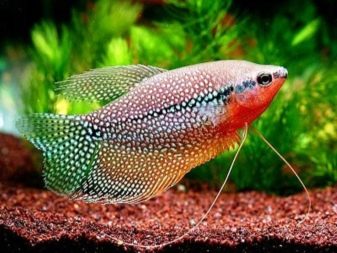
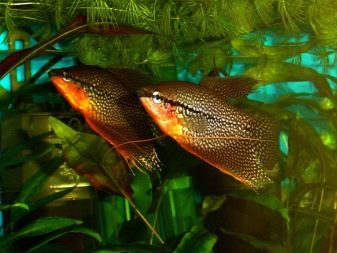
Water
Gourami adapt well to different conditions, but for a comfortable and long life, the parameters of the water in the aquarium should be as follows:
- temperature - 22–27 ° C;
- acidity - 6.0–7.5 pH;
- hardness - 8.0–15 dH.
There are some exceptions to this rule. Rainbow gourami prefers softer water (4–6.5dH), and chocolate gourami is thermophilic - the temperature of the reservoir should be in the range of 26–30 ° C.
For the maintenance of the remaining species, the standard water parameters specified above are used.
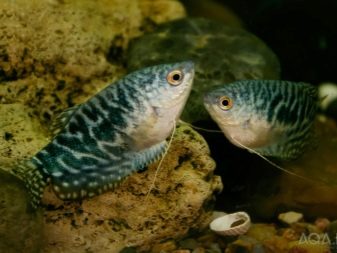
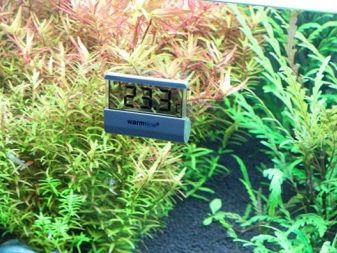
The aquarium does not have to be equipped with an aeration system. It is necessary only if the reservoir is very densely populated. But the installation of the filter is needed, it will keep the aquarium clean. The remains of uneaten food, decaying particles of plants and waste products of fish - all this poison water. Thanks to the purification system, the water remains transparent and comfortable for the fish. When installing the filter, it should be noted that gourami prefer stagnant water, so the flow should be minimal.
Partial water changes are required weekly. 20-25% of the liquid is drained from the aquarium using a hose and a basin. Next, pour fresh water passed through the filter. Previously, she is allowed to stand for 2-3 days. So the temperature is equalized to a comfortable room, and water can be safely added to the aquarium. A complete replacement of the aquatic environment is not required; this will cause stress in the fish and disrupt the formed ecosystem.
Such radical measures are resorted to only with the spread of infection in the aquarium.
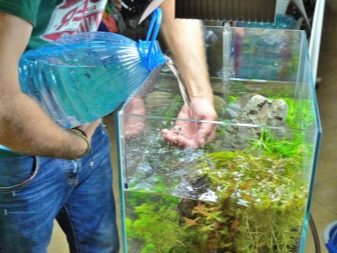
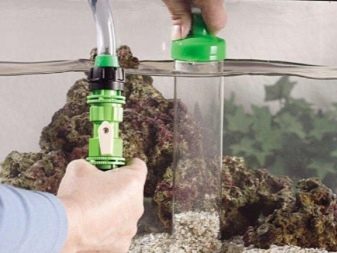
Ground and lighting
For an aquarium with gourami, it is better to choose dark soil. Against such a background, the color of the fish looks more spectacular, overflow and shine of scales will be more noticeable. Can be used:
- coarse sand;
- pebbles of small size;
- granite chips.
Gourami are photophilous, for keeping the fish you need to equip the aquarium with powerful lamps. They must be located above the pond, and not from the side or bottom. Since gourami spend most of their time in the upper layer of water, light should fall from above. At night, the lamps are turned off.
The daylight hours should be about 11-12 hours.
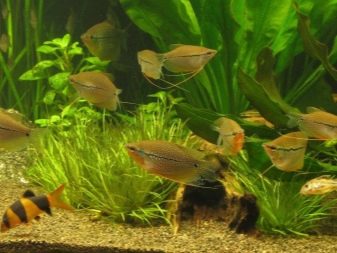
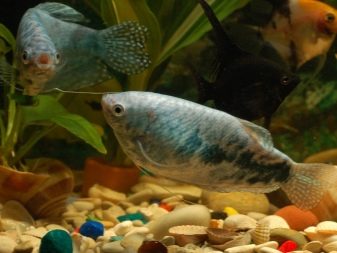
Vegetation and decor
When you design an aquarium, you need to take care of a sufficient number of shelters. In dense thickets, fish feel calmer. You can plant a pond with the following plants:
- vallisneria - aquarium grass that grows well in bright light;
- elodea - can grow both rooted in the ground, and freely floating in the water column;
- Indian fern - a beautiful plant with thin carved leaves, looks good in the background of the aquarium;
- Anubias - a bush useful for the aquarium, purifies water and saturates it with oxygen;
- cryptocoryne is an aquatic plant with long leaves; when certain conditions are created, it blooms beautifully;
- riccia - floating algae, necessary for males with gourams to build a nest;
- nitella is another species of floating plant.
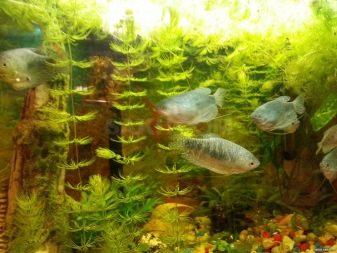
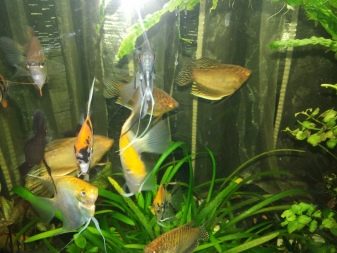
You can choose any vegetation, the main thing is that the conditions for keeping fish and algae are similar. The aquarium is planted densely, but without fanaticism. A certain part of the space is left free in case the fish want to actively swim. It is best to plant bushes on the sides and along the back wall of the tank, and leave the middle without plants.
At the bottom you can put driftwood, pottery shards and decorative ornaments. They should not have sharp edges. Otherwise, the gourami hurrying to cover may accidentally injure themselves. Several snails inhabit the aquarium with fish.
These are excellent cleaners, they remove plaque from the scenery, tank walls and plant leaves.
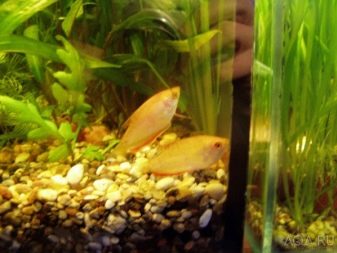
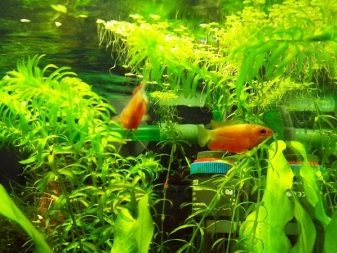
Feeding rules
Gourami are omnivorous; they are pleased to eat dry, plant and live food.But it is worth considering that their mouth is small, even in large species, so food for fish must be finely cut or grinded into crumbs. From dry food, it is preferable to give them flakes or chips, they remain longer on the surface of the water. Tetra produces good quality feed. For gourami you can choose:
- TetraMin - universal food for every day;
- Tetra Phyll Flakes contains healthy plant-based ingredients;
- TetraPro Color makes fish color brighter;
- TetraPro Energy energizes fish;
- TetraPro Menu is a balanced nutritious food.
Fish is fed 2 times a day in small portions. All food should be eaten in about 2 minutes, the leftovers are removed. Gourami are prone to overeating, so it’s useful for them to arrange a fasting day: once a week they are not given food for a whole day.
Such a procedure will not harm health, but, on the contrary, will exclude in the future such a common fish disease as obesity.

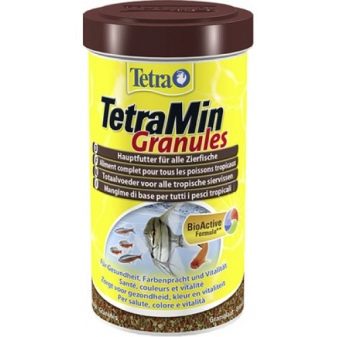
There must be live feed in the diet. It makes the fish more resilient and their color more vibrant. Various worms and small larvae fit:
- bloodworm;
- pipe maker;
- Artemia
- nematode;
- flour worms.
Before feeding, live food is thoroughly washed and kept in running water. Sometimes larvae can be a source of diseases dangerous to fish. Therefore, it is best to grow them yourself or purchase them in trusted specialized stores. If there is any doubt as feed, then it should be put in the freezer for a day. After freezing, it will become safe.
Gourami can give food from the table. Fish gladly eat cottage cheese, cream cheese, finely chopped raw shrimp.
But such food should not be fed too often, pets can be spoiled no more than 1 time per week.
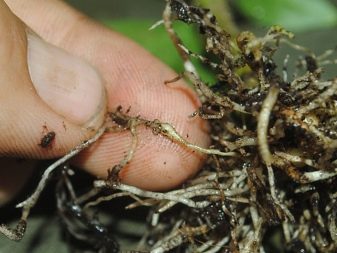
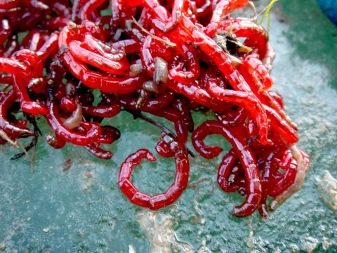
How to distinguish a male from a female?
To distinguish a male from a female by gourami is quite simple. There are 3 signs by which you can determine the sex of an individual.
- In size and body shape. Females are smaller and rounder, males are slimmer and have a more elongated body shape.
- By color. The male is noticeably brighter, and during the spawning period, new shades may appear on his abdomen. For example, the breasts of pearl gourami become orange-red. An exception is gourami vaylanta, in this species, the color of the female is more beautiful than that of the male.
- In the shape of the dorsal and anal fins. It is considered the most reliable way to determine sex. The fins of the female are smaller and have a rounded shape, they are pointed at the male.
You can trace the behavior of fish. Males often chase females, and they hide in shelters. This is not a manifestation of aggression, but a peculiar way of courting the "lady of the heart."
When this happens, then it's time for the fish to spawn.
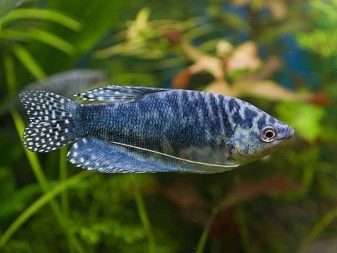
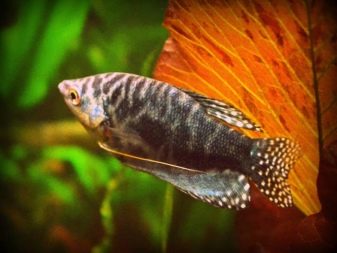
Breeding
Before spawning, producers should be divided by a week. The female and the male are seated in different aquariums and fed with live food. At this time, you can start arranging the spawning:
- choose a tank with a volume of 20 liters or more;
- in order not to cause stress in the fish, the water in the spawning in all respects should not differ much from the aquarium;
- water temperature should be between 25–26 ° C;
- water level - about 15–20 cm;
- it is not necessary to fill the bottom with soil, but you should put some shelter for the female, for example, snags or pottery shards;
- be sure to place a couple of bushes of ricchia or other floating plants.
The fish is launched in the evening. At first it is recommended to plant a male, and after a couple of hours - a female. Since fish in their natural habitats spawn in the rainy season, they need to artificially create such conditions. To do this, replace 25-30% of water. Fresh water temperature should be 2-3 degrees higher than in spawning.
Such a simple procedure stimulates spawning, which usually begins the very next morning.

On the surface of the water, the male builds a nest, similar to whipped foam. He does this from air bubbles, sometimes he can use leaves of floating plants. Spawning lasts 2-3 hours; this is a rather interesting process.Gourami are not viviparous fish; they spawn. The male embraces the female with his body and fertilizes the eggs, then carefully carries them to the nest. During spawning, it is recommended to cover the sight glass and not disturb the “lovers”.
The maximum fecundity of a female is up to 2000 eggs, but most often no more than 1000 eggs appear. Not all of them will develop fry, most of the eggs will die. After spawning, the male can show aggression to the female, so she is sedated. The male is left for some more time, he will look after the nest.
After 1–2 days, larvae appear. It's time to put the male off and lower the water level by 10 cm. Kids do not need additional feeding yet. All nutrients enter them through the yolk sac. Within 3 days, it gradually dissolves and fry form. They actively swim around the aquarium, at this time they start complementary foods. Give them live dust and boiled egg yolk. As the babies grow, the food is enlarged, nauplii of brine shrimp, a microworm, and dry flakes for fry are introduced into the diet. Gourami fry grow quickly, and become sexually mature at the age of 10-12 months.
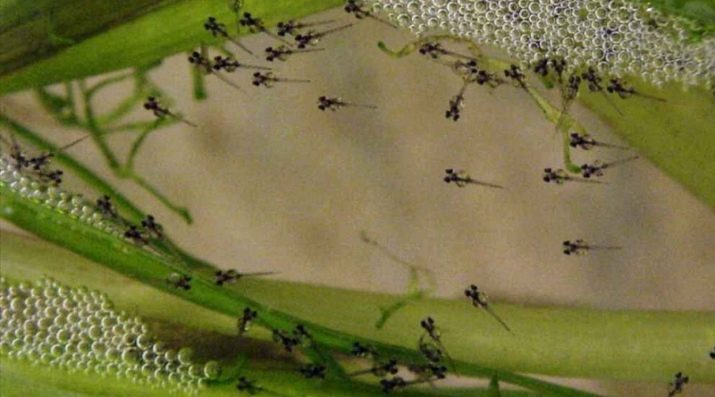
Life span
The life expectancy of gourami is 5 to 7 years, depending on the type and conditions of detention. In order for the fish to live as long as possible, they need to create favorable conditions:
- spacious aquarium;
- pure water;
- a large number of shelters;
- peaceful coexistence with other species of fish;
- weekly live feed;
- inclusion of various vitamin supplements in the diet.
If the fish are comfortable, then they can live longer. Among the gourami, there are centenarians who live for 8–9 years.
But it should be noted that the "aged" fish do not spawn or make it worse.

Tips
Keeping a gourami is easy but there are a few nuances that are worth paying attention to.
- It is necessary to ensure that there are few floating plants. Algae on the surface of the water can prevent the gourami from swallowing air, and also prevent the penetration of light.
- Algae grows rapidly, so it is recommended to thin out bushes periodically. Healthy branches of plants can be sold or given to other aquarists, and all dead and decayed leaves should be discarded.
- When changing water, do not forget to clean the soil. This can be done using a siphon.
- Protect the aquarium from drafts. A pond near an open window is not the best solution. If you swallow cold air, the fish may get sick.
- Watch the color of the fish. The pale color of the gourami indicates stress or illness.
- If strange growths or unusual spots appear on the fish’s body, then such an individual should be immediately planted. Perhaps these are symptoms of an infectious disease.
- It is not recommended to launch freshly bought fish in a common aquarium. Better to keep them in quarantine for a week.
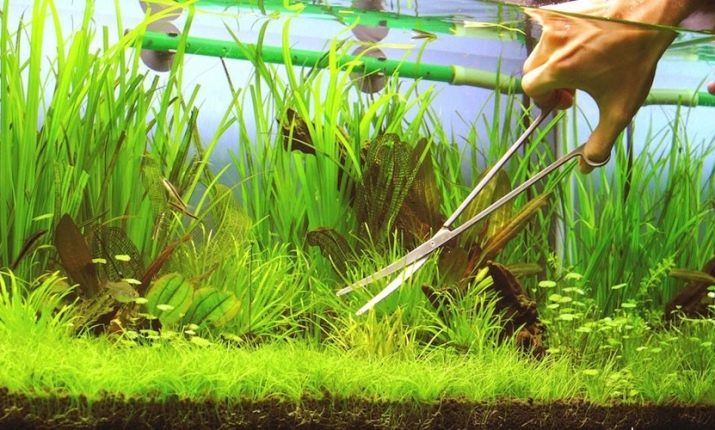
Review Reviews
Gurami - a fairly common "home" fish. Many aquarists keep them and breed them successfully. Reviews are mostly enthusiastic and positive. Of the main advantages of this type, breeders distinguish:
- unpretentiousness;
- eats any feed well;
- beautiful appearance;
- can grow large enough;
- loving and accommodating with other species of fish.
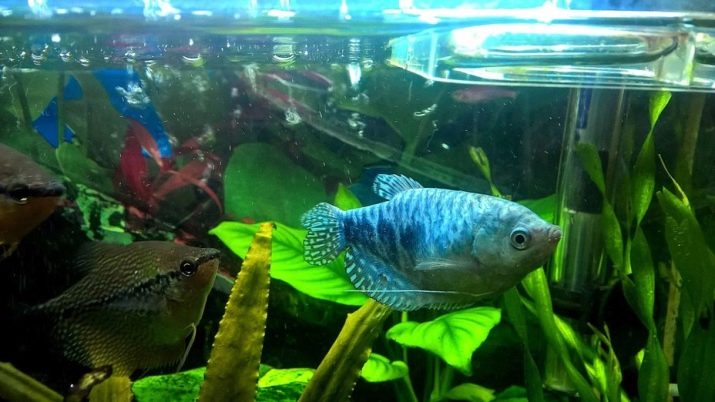
The sociability and interesting behavior of the gourami is also emphasized. If you bring your finger to the glass of the aquarium, then the fish raises its fins, a mustache, wanting to feel an unfamiliar object. In the reviews, few write about the minuses, basically everyone praises the wonderful labyrinth fish, but several difficult moments still note:
- intraspecific aggression between males;
- gourami sometimes jump out of the aquarium;
- the need for planting thick plants.
Some aquarists write about the complexity of their breeding. Indeed, for successful breeding of fish you need a separate equipped spawning and special conditions. This requires some effort from the breeder, but the result is worth it.It is very interesting to watch the spawning process by the gourami, and the appeared fry can be put up for sale.
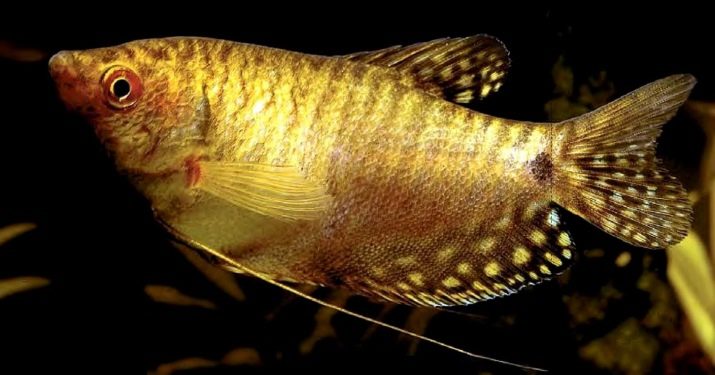
You can learn about how to take care of Gurami fish from the video below.
